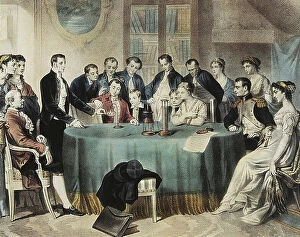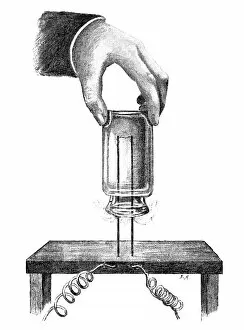Conductivity Collection
"Unleashing the Power of Conductivity: A Journey through Electrical Experiments and Discoveries" Step into the world of conductivity
All Professionally Made to Order for Quick Shipping
"Unleashing the Power of Conductivity: A Journey through Electrical Experiments and Discoveries" Step into the world of conductivity, where magnetic levitation defies gravity and superconductors revolutionize transportation. Witness the remarkable experiments that shaped our understanding of electricity. In the 18th century, Abbe Jean Antoine Nollet mesmerized audiences with his electrical experiment on a man. Sparks flew as currents coursed through their bodies, unraveling the mysteries of conductivity. Benjamin Franklin, an iconic figure at his table, delved into electrical exploration during this era. Essai sur l'électricité des corps showcased captivating illustrations capturing scientists experimenting with electricity. Two instruments meticulously studied its properties in intricate detail. Louis Galvani's groundbreaking research on frogs unveiled a new realm of possibilities for conductivity. His engraving immortalizes this pivotal moment when nature intertwined with science to reveal electrifying truths. Jean Chappe d'Auteroche ventured further into uncharted territories in Tobolsk in 1761. Experimenting fearlessly with electricity, he pushed boundaries and expanded our knowledge base. Abbe Nollet's ingenious creation, the electricity machine from 1746 replicated by Boris Mestchersky, demonstrated how conductive materials could be harnessed for practical applications. The pages of De viribus electricitatis in motu come alive as frogs take center stage once again. These illustrations capture moments frozen in time—experiments that propelled us forward on our quest to understand conductivity fully. From magnetic levitation to electrifying experiments on living beings, these glimpses into history remind us how far we have come in harnessing the power of conductivity. As we continue to explore its potential today and beyond, let us never forget those who paved the way for our electrified future.



































